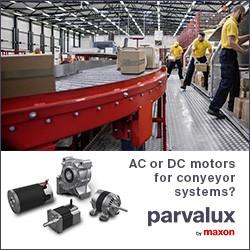Manufacturing business owners must specify the subject interest (i.e., what’s being valued, precisely), valuation date and intended user or users. Appraisers can help owners make these decisions, but cannot make these decisions themselves.
Decoding Business Valuation: What Manufacturers Need to Know (Part 1)
Chuck Faunce | Gorfine, Schiller & Gardyn
Like all businesses owners, owners of manufacturing businesses naturally wonder about the value of their business, especially if they’re planning to sell. However, there are many other reasons to value a business, and understanding those reasons can help to drive growth, improve profits and minimize taxes.
For example, in addition to M&A, valuations can be important to bank financing, capital budgeting, recapitalizations and assessing life insurance needs. Valuations may be required if a manufacturer issues equity compensation such as stock options or stock appreciation rights, or if owners are contemplating a change in organizational form, implementing an Employee Stock Ownership Plan (ESOP), or making a charitable donation or gifting an ownership interest in the company.
Further, legal settings such as divorce and contractual disputes may require a valuation or an analysis of economic damages.
The Reason for Doing a Valuation Matters
The reason for doing a valuation, referred to as its “intended use,” determines which of two standards of value appraisers are required to use. Those two standards are often referred to as “fair market value” and “investment value” (there are other standards but, broadly speaking, they are variations of these two). These standards require different inputs that can result in different values, and the difference could be significant – as much as 100 percent or more.
The difference between the fair market and investment value standards involves synergies. Synergies are the incremental benefits resulting from combining a seller’s assets with a buyer's complementary assets. A buyer’s complementary assets include things like a bigger sales force, more efficient processes and better access to capital compared to the seller.
The fair market value standard only allows consideration of synergies available to all investors. Investors with unique or buyer-specific synergies that are greater than typical market participant synergies are usually willing to pay more. Appraisers use the investment value standard when the intended use calls for incorporating these buyer specific synergies to identify the value to a particular buyer.
It’s the Owner’s Job to Define the Valuation Assignment
In addition to identifying the intended use, manufacturing business owners must specify the subject interest (i.e., what’s being valued, precisely), valuation date and intended user or users. Appraisers can help owners make these decisions, but cannot make these decisions themselves.
The valuation date is the specific point in time as of which the valuation applies. It is important to note that, since value changes over time, the relevance of a valuation as of a given date declines the further removed it gets from that date.
The combination of the intended use and users determines the scope of work which, broadly speaking, will involve either an appraisal or a value calculation. An appraisal, which is an objective, independent opinion of value, requires a broad and more costly scope. For example, litigation situations typically require an appraisal or an expert opinion.
However, if an objective, independent opinion isn’t required – often the case for settlement negotiations – a value calculation may be preferable. This option consumes less time and money than an appraisal, and may be a better choice.
The importance of clearly defining the valuation assignment cannot be overstated. Unless all of these elements are clearly defined, the estimate of value will be ambiguous.
Stay tuned for part two of this four-part series, where we discuss what valuation tells you that accounting does not.

Chuck Faunce is the Director Business Valuation & Litigation Support at Gorfine, Schiller & Gardyn. He has more than 20 years of experience providing manufacturing clients with valuation consulting services including financial and tax compliance reporting, economic damages analysis and expert testimony, and buy and sell side transaction analysis.
The content & opinions in this article are the author’s and do not necessarily represent the views of ManufacturingTomorrow
Comments (0)
This post does not have any comments. Be the first to leave a comment below.
Featured Product

